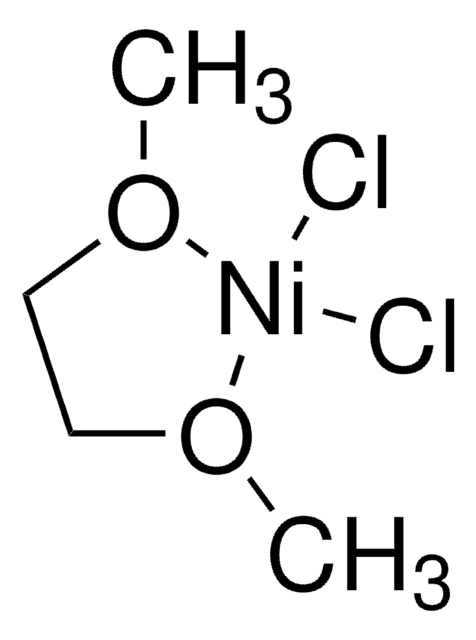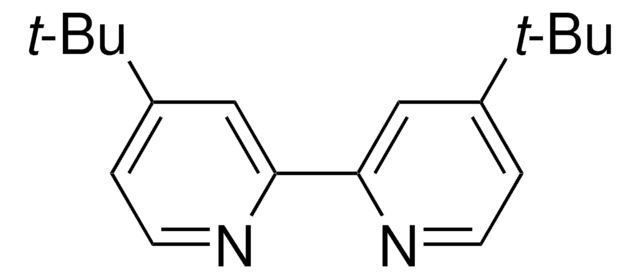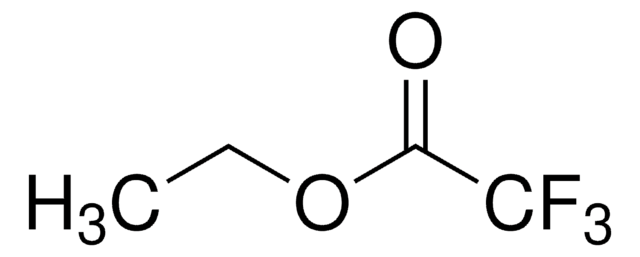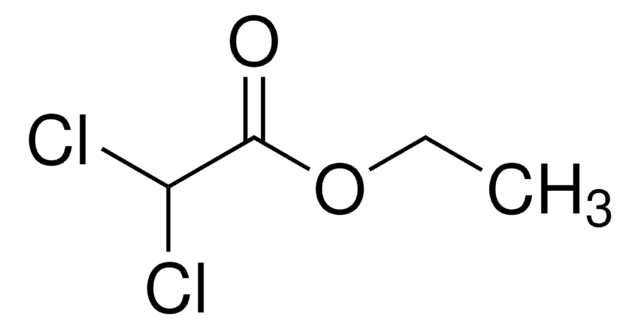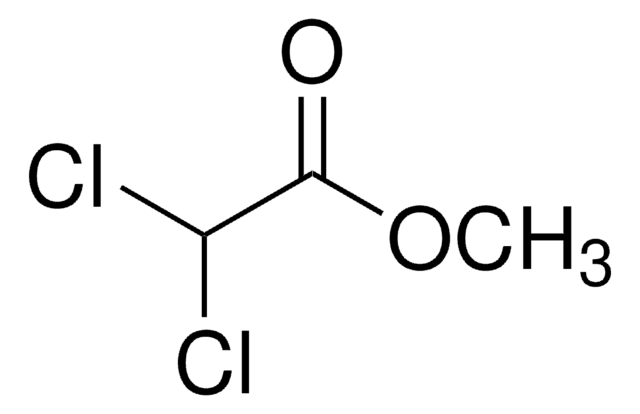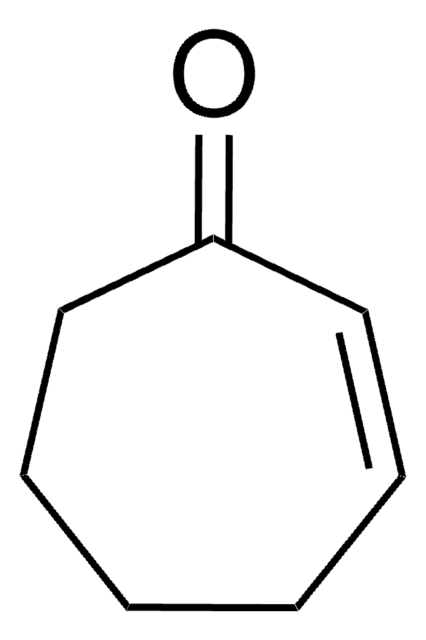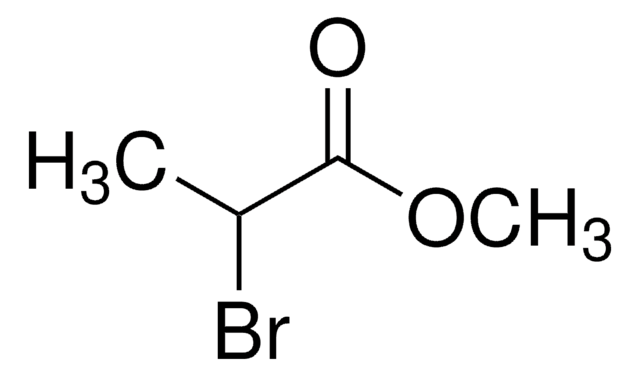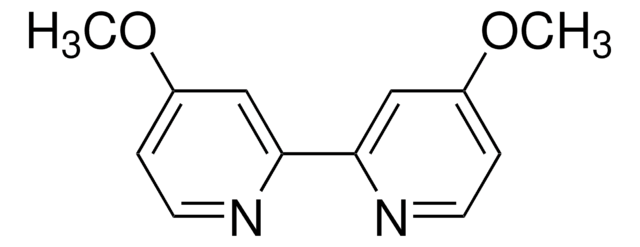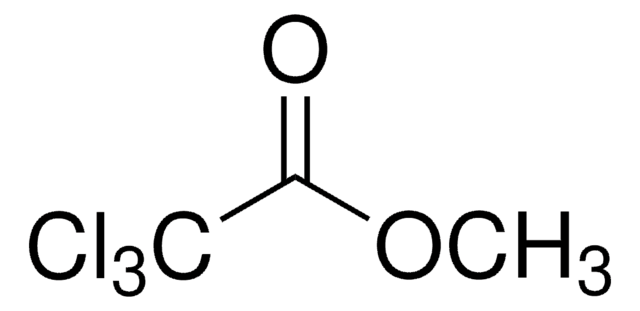All Photos(1)
About This Item
Linear Formula:
Cl3CCO2CH2CH3
CAS Number:
Molecular Weight:
191.44
Beilstein:
1761567
EC Number:
MDL number:
UNSPSC Code:
12352100
PubChem Substance ID:
NACRES:
NA.22
Recommended Products
Quality Level
Assay
97%
refractive index
n20/D 1.453 (lit.)
bp
168 °C (lit.)
solubility
alcohol: miscible(lit.)
diethyl ether: miscible(lit.)
water: insoluble(lit.)
density
1.378 g/mL at 25 °C (lit.)
SMILES string
CCOC(=O)C(Cl)(Cl)Cl
InChI
1S/C4H5Cl3O2/c1-2-9-3(8)4(5,6)7/h2H2,1H3
InChI key
SJMLNDPIJZBEKY-UHFFFAOYSA-N
Looking for similar products? Visit Product Comparison Guide
General description
Ethyl trichloroacetate undergoes atom-transfer radical addition reaction with styrene catalyzed by the Ru-pentamethylcyclopentadienyl complexes.
Application
Ethyl trichloroacetate was used in the synthesis of dichlorocarbon precursor, phenyl(trichloromethyl)methyl.
Signal Word
Warning
Hazard Statements
Precautionary Statements
Hazard Classifications
Acute Tox. 4 Oral - Skin Irrit. 2
Storage Class Code
10 - Combustible liquids
WGK
WGK 1
Flash Point(F)
163.4 °F - closed cup
Flash Point(C)
73 °C - closed cup
Personal Protective Equipment
dust mask type N95 (US), Eyeshields, Gloves
Regulatory Information
新产品
Choose from one of the most recent versions:
Already Own This Product?
Find documentation for the products that you have recently purchased in the Document Library.
An Improved Synthesis of Phenyl (trichloro-methyl) mercury from Sodium Methoxide and Ethyl Trichloroacetate.
Schweizer EE and O'Neill GJ.
The Journal of Organic Chemistry, 28(3), 851-852 (1963)
Mariano A Fernández-Zúmel et al.
Chemistry (Weinheim an der Bergstrasse, Germany), 15(43), 11601-11607 (2009-09-15)
Kinetic and spectroscopic analyses were performed to gain information about the mechanism of atom-transfer radical reactions catalyzed by the complexes [RuCl2Cp*(PPh3)] and [RuClCp*(PPh3)2] (Cp*=pentamethylcyclopentadienyl), in the presence and in the absence of the reducing agent magnesium. The reactions of styrene
Our team of scientists has experience in all areas of research including Life Science, Material Science, Chemical Synthesis, Chromatography, Analytical and many others.
Contact Technical Service